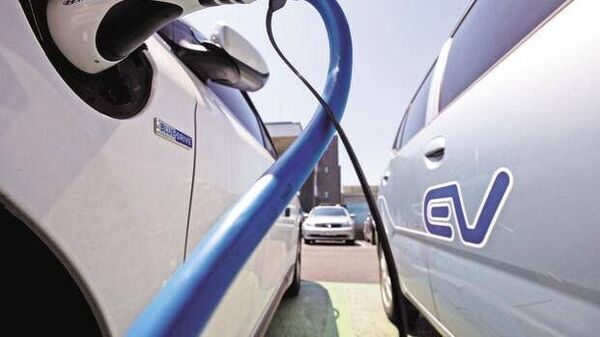I recently asked a senior executive at a leading SUV maker in India for an opinion on a tiny two-door electric car that has just been launched in the country. “In India, people are very conscious of their status. Do you think you will ever take this small car to a wedding in your family, with your mom and dad packed away in the back seats, and awkwardly get out of a two-door car in front of your relatives?”
If I was being honest with myself, probably not. Most certainly not. And a small electric micro-car, smaller even than a Tata Nano, isn’t meant for that purpose either—you don’t pack away your family of four in a car like that to attend a wedding or go out of town. But if one were to flip this question around, how sensible is it to take your 7-seater SUV for your grocery run, pick up your kids from class, or go shopping? Not much, but how often do we see that happening? All the time, which goes on to prove that the senior executive did have a point—a car is a vanity purchase for most Indian families. Even in China, buyers are obsessed with exorbitantly large cars. So much so that vehicle makers make special long-wheelbase iterations of popular luxury models just for China. India, until recently, was known to be a small-car market dominated by Suzuki, a popular maker of the ‘kei car’ or ‘k-car’ in Japan, which refers to a small, light vehicle that can zip through small urban spaces with ease and leave a lower carbon footprint. But we’re starting to mimic an obsession of the Western and Chinese markets with big fuel-guzzlers. To be fair, they can traverse harsh terrains much more confidently than a small car. And they do give the driver a sense of command on the road. What’s not to like?
A friend and editor of a popular auto magazine says that people in India don’t buy a car for 99% of their use cases, but for the 1% use case that they’ll hardly ever find themselves in. Take a look around the next time you’re stuck in peak-hour traffic, check all the cars within sight for the number of people in them, and you’ll know how true that is.
The question, however, is whether that’s the best option for our cities notorious for hours-long gridlocks and road infrastructure that is woefully inadequate for this volume of traffic. MG Motor India, while marketing its two-door micro EV Comet, talked about how 70% of people in a vehicle travel solo. In that case, how practical is it from an economy, efficiency, environment and congestion point-of-view for a solo traveller to use a big vehicle in a city? In cities like Delhi, and increasingly Mumbai too, air pollution is a serious health hazard, and larger vehicles generally pollute more. The trajectory of fuel prices is also headed upwards—which means they’re not light on your pocket either.
Another issue is the lack of parking facilities in big cities, where there is extreme pressure on parking, given a limited supply of spaces. Illegal and haphazard parking, which makes congestion worse, particularly in commercial and residential areas, only adds to the problem. Additionally, we have no road-pricing policies of the kind seen in London, for instance, which could help reduce peak traffic and encourage the use of public transportation or other sustainable modes of transport.
So a small Lego-car-like EV, such as the MG Comet, is likely to hold appeal. Less than 3 metres in length, the manoeuvrability it offers you in tight urban spaces is matchless. You can get into tight corners and park with ease. Besides, it has all the gadgetry you need to make your city commute practical and fun—large floating displays, ample storage space if you’re driving solo or with a co-driver, and an infotainment system that cuts the clutter but wouldn’t leave you wanting. Sure, it will rudely remind you of its smallness each time you drive over a pothole or speed bump. But it gives you a practical 200km range, which can give you an average cost of running as low as ₹519 a month in an EV that occupies much less space than even a typical hatchback. That is a solution India’s congested cities need, but might not necessarily be ready to embrace. However, at a ₹8 lakh starting price, it is significantly more expensive to buy than a regular petrol-run hatchback.
College-going younglings certainly don’t find micro EVs fancy enough, but middle-aged people who have done their big car-flex in their younger years could find value in a cute-sized car like this. Even senior citizens who prioritize ease of driving over the muscular road presence of a large car may find it a sensible buy.
We’ve seen cars like this before: the Reva and the e2O were both small electric cars, but didn’t work because they were ahead of their time and had fairly impractically low driving ranges. EVs are now in the conversation of many affluent urban Indians. And perhaps it’s time for our car-buyers to take a lead on adopting eco-friendly solutions for our gridlocked roads.
The Comet’s boxy design and two-door format even for a plush-looking car, though, may prove polarizing. Your first instinct may be to dismiss micro EVs as a fad, or toy cars, but I urge you to get behind the wheel and weigh your options. China, with one million such EVs already on its roads, is already a convert. Maybe India can be next.
Alisha Sachdev covers the automotive & mobility sector for Mint.
Download The Mint News App to get Daily Market Updates.
More
Less
#case #small #electric #cars #Indian #streets
